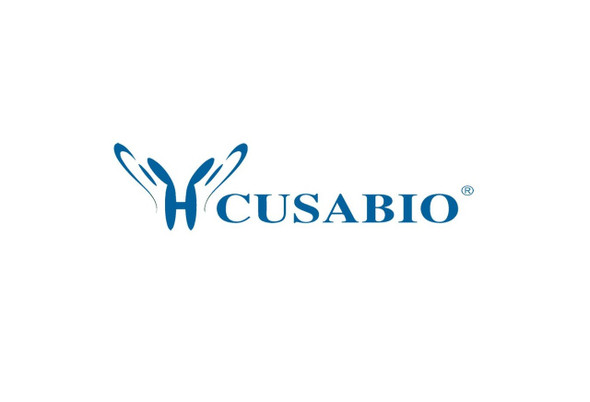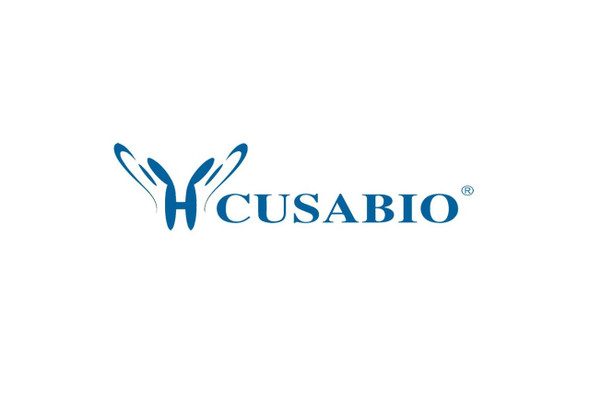Cusabio Human Recombinants
Recombinant Human PHD finger-like domain-containing protein 5A (PHF5A) | CSB-EP017915HU
- SKU:
- CSB-EP017915HU
- Availability:
- 13 - 23 Working Days
Description
Recombinant Human PHD finger-like domain-containing protein 5A (PHF5A) | CSB-EP017915HU | Cusabio
Alternative Name(s): Splicing factor 3B-associated 14KDA protein ;SF3b14b
Gene Names: PHF5A
Research Areas: Transcription
Organism: Homo sapiens (Human)
AA Sequence: MAKHHPDLIFCRKQAGVAIGRLCEKCDGKCVICDSYVRPCTLVRICDECNYGSYQGRCVICGGPGVSDAYYCKECTIQEKDRDGCPKIVNLGSSKTDLFYERKKYGFKKR
Source: E.coli
Tag Info: N-terminal GST-tagged
Expression Region: 1-110aa
Sequence Info: Full Length
MW: 39.4 kDa
Purity: Greater than 90% as determined by SDS-PAGE.
Relevance: Acts as a transcriptional regulator by binding to the GJA1/Cx43 promoter and enhancing its up-regulation by ESR1/ER-alpha. Also involved in pre-mRNA splicing.
Reference: Initial characterization of the human central proteome.Burkard T.R., Planyavsky M., Kaupe I., Breitwieser F.P., Buerckstuemmer T., Bennett K.L., Superti-Furga G., Colinge J.BMC Syst. Biol. 5:17-17(2011)
Storage: The shelf life is related to many factors, storage state, buffer ingredients, storage temperature and the stability of the protein itself. Generally, the shelf life of liquid form is 6 months at -20?/-80?. The shelf life of lyophilized form is 12 months at -20?/-80?.
Notes: Repeated freezing and thawing is not recommended. Store working aliquots at 4? for up to one week.
Function: Involved with the PAF1 complex (PAF1C) in transcriptional elongation by RNA polymerase II, and in regulation of development and maintenance of embryonic stem cell (ESC) pluripotency. Required for maintenance of ESCs self-renewal and cellular reprogramming of stem cells. Maintains pluripotency by recruiting and stabilizing PAF1C on pluripotency genes loci, and by regulating the expression of the pluripotency genes. Regulates the deposition of elongation-associated histone modifications, including dimethylated histone H3 'Lys-79' (H3K79me2) and trimethylated histone H3 'Lys-36' (H3K36me3), on PAF1C targets, self-renewal and pluripotency genes. Regulates RNA polymerase II promoter-proximal pause release of the PAF1C targets and self-renewal genes, and the levels of elongating ('Ser-2' phosphorylated) RNA polymerase II in their gene bodies. Regulates muscle specification in adult stem cells by stabilizing PAF1C in chromatin to promote myogenic differentiation (By similarity). Involved in pre-mRNA splicing as a component of the splicing factor SF3B complex
Involvement in disease:
Subcellular Location: Nucleus, Nucleus speckle
Protein Families: PHF5 family
Tissue Specificity:
Paythway:
Form: Liquid or Lyophilized powder
Buffer: If the delivery form is liquid, the default storage buffer is Tris/PBS-based buffer, 5%-50% glycerol. If the delivery form is lyophilized powder, the buffer before lyophilization is Tris/PBS-based buffer, 6% Trehalose, pH 8.0.
Reconstitution: We recommend that this vial be briefly centrifuged prior to opening to bring the contents to the bottom. Please reconstitute protein in deionized sterile water to a concentration of 0.1-1.0 mg/mL.We recommend to add 5-50% of glycerol (final concentration) and aliquot for long-term storage at -20?/-80?. Our default final concentration of glycerol is 50%. Customers could use it as reference.
Uniprot ID: Q7RTV0
HGNC Database Link: HGNC
UniGene Database Link: UniGene
KEGG Database Link: KEGG
STRING Database Link: STRING
OMIM Database Link: OMIM









